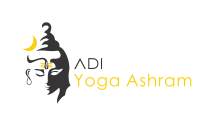Plank Pose (Phalakasana): Steps, Benefits and Precautions
Plank Pose, also known as Phalakasana in Sanskrit, is a fundamental yoga pose that strengthens the core and upper body. This arm balance is widely practiced for its ability to build stability, improve posture, and enhance overall strength. The name “Phalakasana” is derived from the Sanskrit words “phalaka,” meaning “plank” or “board,” and “asana,” meaning “pose” or “posture.”
Etymology and Historical Significance
The term “Phalakasana” reflects the pose’s resemblance to a sturdy wooden plank, highlighting its emphasis on stability and firmness. Plank Pose has ancient roots in Hatha Yoga traditions and is mentioned in classical yoga texts like the Hatha Yoga Pradipika and the Gheranda Samhita. It was traditionally practiced as a preparatory pose for more advanced arm balances and inversions.
Plank Pose holds a significant place in modern yoga practices due to its effectiveness in building core strength, improving body alignment, and supporting overall physical fitness. It has become a cornerstone pose in yoga sequences, often incorporated into flow sequences and core-focused workouts.
Steps to Practice:
- Begin in Tabletop position.
- Inhale and extend the sternum away from the navel, opening the chest into a Cow tilt.
- Exhale and engage the lower belly with a slight Cat tilt, maintaining a neutral lower back.
- Transition by straightening your legs and lifting into Plank Pose.
- Keep the thighs lifted and the tailbone descending to create a strong core engagement.
- Hold the pose for up to 1 minute, maintaining steady breath and alignment.
Beginner Tips
When practicing Plank Pose for the first time:
- Focus on maintaining a straight line from shoulders to heels, avoiding sagging hips or lifting them too high.
- If needed, lower the knees to modify the pose and work towards building strength gradually.
Variations
1. Knee-Down Plank Pose:
- Lower the knees to the ground, maintaining an inclined torso. Keep the core engaged and hips low.
2. Plank Pose on a Chair:
- Use a sturdy chair against a wall for support. Place hands on the seat and walk feet back to form a straight line from head to heels. Keep core engaged and tailbone pointing towards heels.
Benefits of Plank Pose (Phalakasana)
Plank Pose, or Phalakasana, offers a wide range of physical and mental benefits for practitioners of all levels. Incorporating this pose into your yoga practice can contribute to overall strength, stability, and body awareness. Here are some key benefits of practicing Plank Pose:
1. Core Strengthening: Plank Pose primarily targets the core muscles, including the rectus abdominis, transverse abdominis, and obliques. Holding the pose builds strength and endurance in these muscles, which is essential for maintaining stability and preventing lower back pain.
2. Arm and Shoulder Strength: Supporting your body weight on your arms and shoulders in Plank Pose helps strengthen these upper body muscles. This can enhance upper body endurance and improve overall shoulder stability.
3. Improves Posture: Regular practice of Plank Pose helps develop proper body alignment and posture. Strengthening the core muscles supports the spine and promotes a neutral spine position, reducing the risk of postural imbalances.
4. Enhances Balance and Coordination: Plank Pose requires engagement of multiple muscle groups simultaneously, improving coordination and balance. Practicing this pose helps develop proprioception, which is the body’s ability to sense its position in space.
5. Increases Endurance: Holding Plank Pose for extended durations challenges endurance and stamina. Over time, consistent practice can lead to improved physical endurance and mental resilience.
6. Boosts Metabolism: Engaging large muscle groups in Plank Pose stimulates metabolism and promotes calorie burning. It can contribute to weight management and overall fitness goals.
Join yoga in rishikesh
Incorporating Plank Pose into a regular yoga practice can provide comprehensive physical and mental benefits, making it a valuable addition to any fitness routine. Start with shorter holds and gradually increase the duration to maximize the benefits of this foundational yoga pose.
Learn to know more about yoga asana so you can join 100 hour yoga teacher training in India and 200 hour yoga teacher training in India and 300 hour yoga teacher training in india



